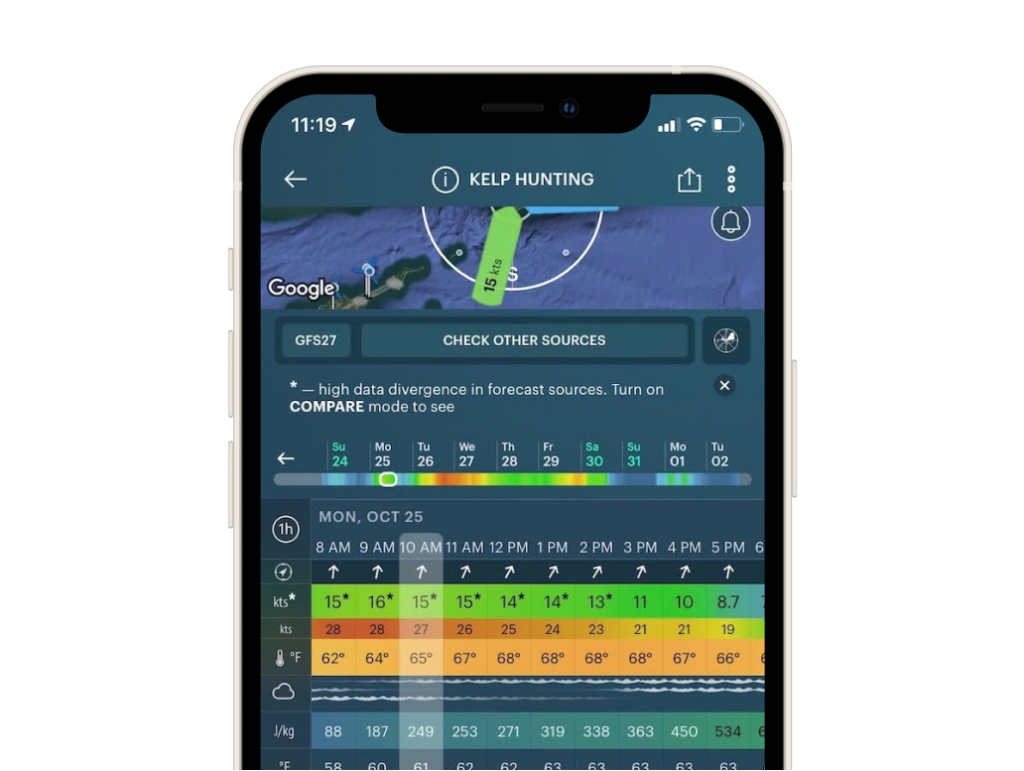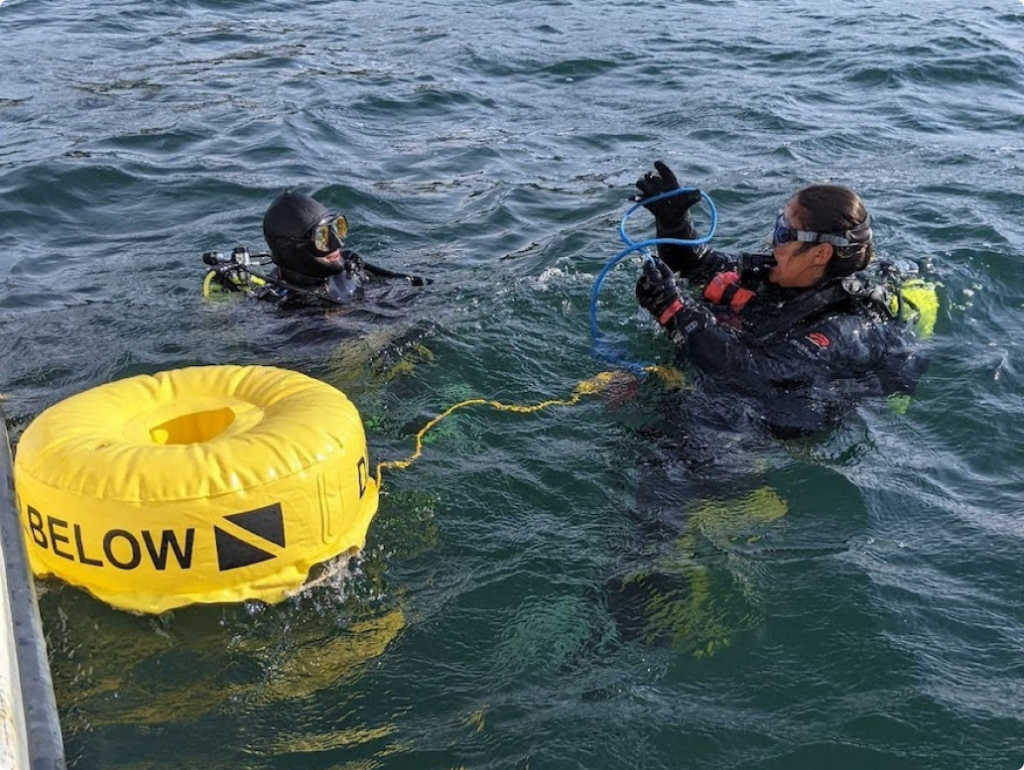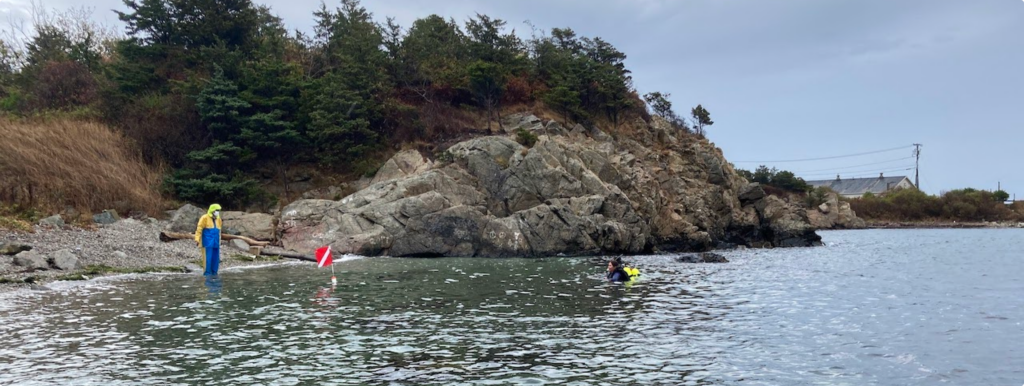Back to: Sorus Collection
After you’ve identified your collection location and method, the next big consideration is accessing the collection site, which will largely depend on weather conditions.
Each collection site will likely come with its own set of ideal conditions. Broadly, avoiding high-wind days will be advantageous at any collection location. At least one week prior to your collection day, start checking for optimal weather windows.
Depending on your method of collection, the tidal height may also be very important. Wading out to your collection site requires very low tides. If you’re free diving, you won’t have to swim as far at low tide. Finding the lowest tide that falls at the right time of day and under the right weather conditions can get tricky. Targeting a minimum of three days is generally a good rule of thumb in case bad weather rolls in and delays the trip.
If you’re using divers to collect your sorus tissue, checking on the strength of the current at the site is also very important for their safety. If the kelp bed you are visiting is in an exposed or high-energy area, you may need to target slack tide for collection and check the surf report; high swells will limit access to certain areas. The strength of the wind can also impact the diver’s visibility, so low winds may offer a more successful collection.
It’s best to discuss with your diver the conditions needed for them to feel comfortable and confident while in the water.


